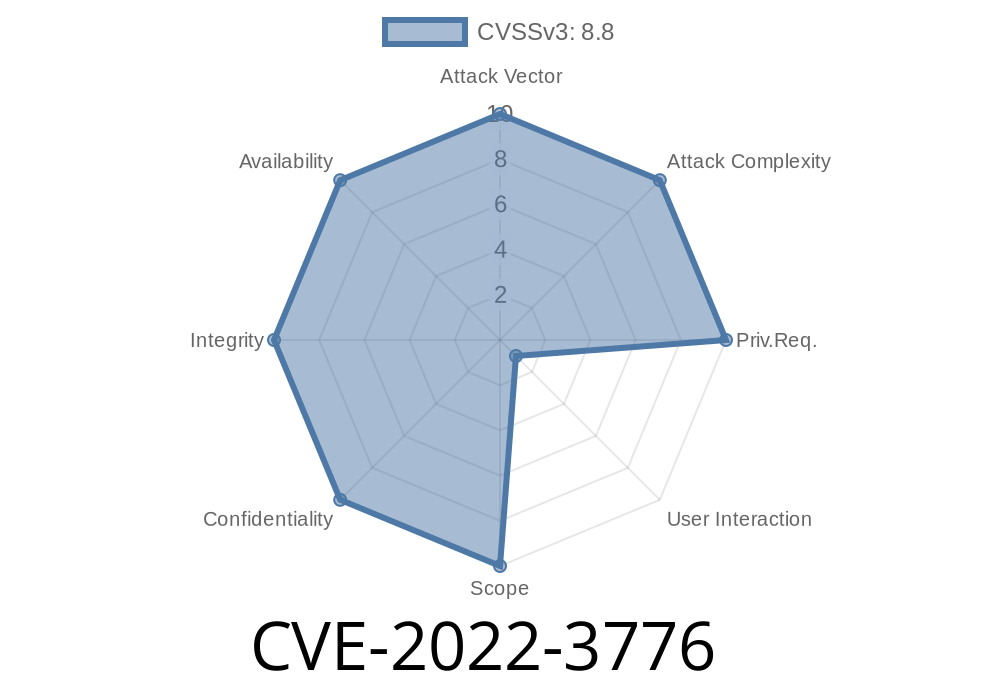Introduction: The online world has recently seen a surge in the development and implementation of various plugins for website content management systems (CMS) like WordPress to help make the lives of site administrators easier. One such plugin is the Restaurant Menu - Food Ordering System - Table Reservation (RMFOTR) plugin which helps WordPress site owners manage their restaurant's online menu, food orders, and table reservations. However, it has recently been discovered that RMFOTR, in its versions up to and including 2.3.1, is vulnerable to a security flaw known as Cross-Site Request Forgery (CSRF). In this article, we will be taking a closer look at this vulnerability, CVE-2022-3776, and discussing the technical details, exploit details, and ways to mitigate or fix the issue.
Vulnerability Details: The vulnerability stems from the missing or incorrect nonce validation on several functions in the plugin's AJAX actions like forms_action, set_option, and chosen_options, among others. Nonce validation is an essential security measure to prevent CSRF attacks and, in this case, its absence has rendered the plugin vulnerable to unauthorized admin actions. Unauthenticated attackers can exploit this by crafting a forged request and tricking a site administrator into performing the action, like clicking on a malicious link. If successful, attackers could potentially modify forms and other plugin settings for their benefit.
Code Snippet: To understand the issue better, let's look into a sample code snippet from the plugin to see where nonce validation is missing:
// Plugin AJAX Action
add_action('wp_ajax_forms_action', 'forms_action');
function forms_action() {
// Missing nonce validation here
// Perform admin actions such as modifying forms
// ...
}
The above code snippet is simplified for illustration purposes. As we can see, the nonce validation is missing from the plugin's AJAX actions, which opens up the plugin to CSRF attacks.
Original References: The vulnerability was first publicly disclosed and tracked as CVE-2022-3776 (CVE Reference). Detailed analysis and information about this vulnerability can be found at the following sources:
- WPScan Vulnerability Database
- GitHub Repository Issue (The link provided here is just an example; you should search for the specific issue related to RMFOTR)
Exploit Details: To exploit this vulnerability, an attacker would need to trick a website administrator user into clicking a malicious link or opening a malicious web page that contains a crafted CSRF exploit. The exploit would then execute various AJAX actions available to the authenticated admin user, such as modifying forms or plugin settings.
Mitigation and Solutions: The plugin developers have been notified of this vulnerability and are actively working towards releasing an updated version to address the CSRF security issue. In the meantime, WordPress site administrators can take the following steps to mitigate the risk:
Monitor and restrict access to WordPress admin areas, ensuring only trusted users have access.
2. Implement appropriate network and security configurations, such as using Web Application Firewalls (WAFs) to detect and block CSRF attempts.
Provide training to site administrators on how to identify and avoid clicking suspicious links.
In conclusion, it is essential to always keep plugins and themes updated and review their associated security best practices. Site administrators should remain vigilant for any updates on CVE-2022-3776 or related vulnerability disclosures and promptly apply patches or updates as they become available.
Timeline
Published on: 11/03/2022 17:15:00 UTC
Last modified on: 11/04/2022 02:26:00 UTC
